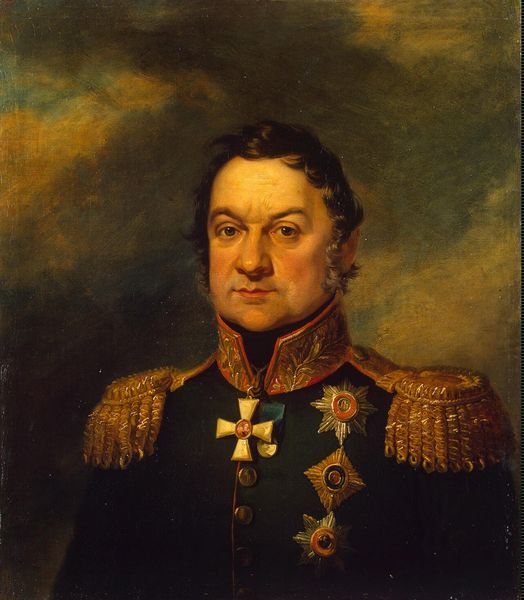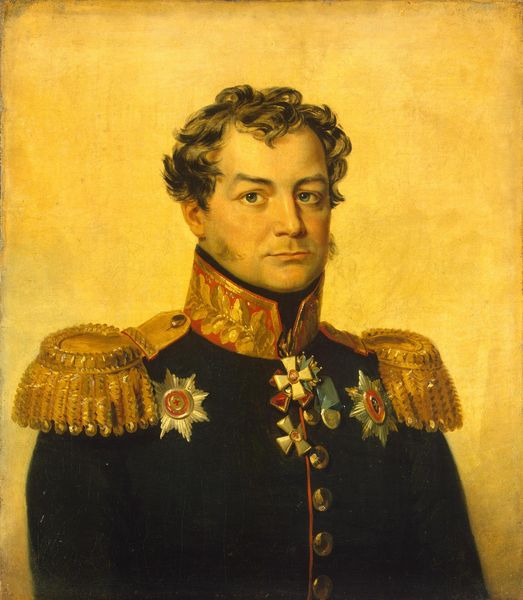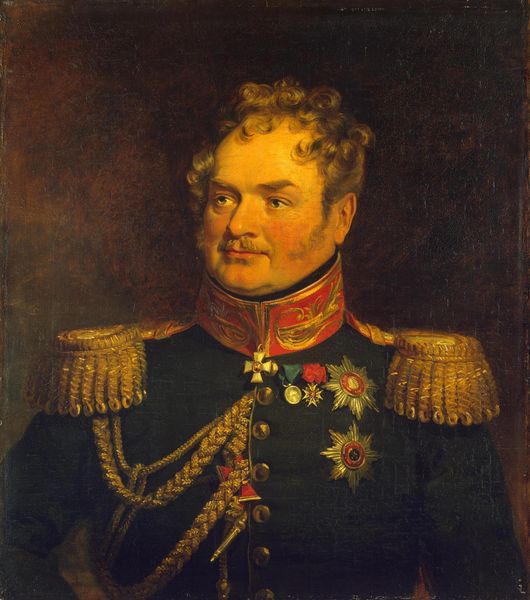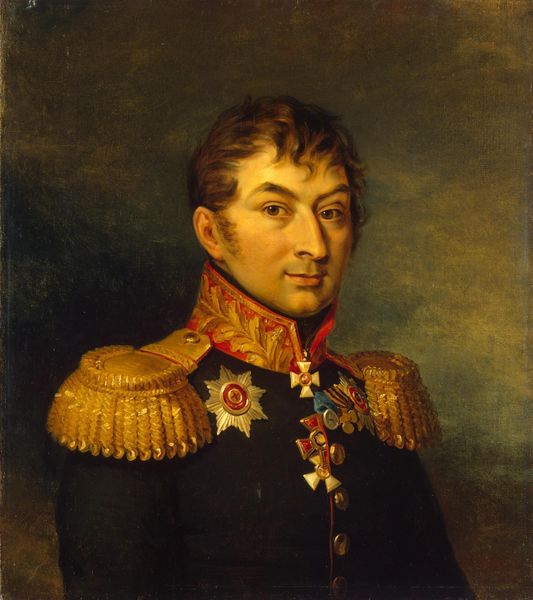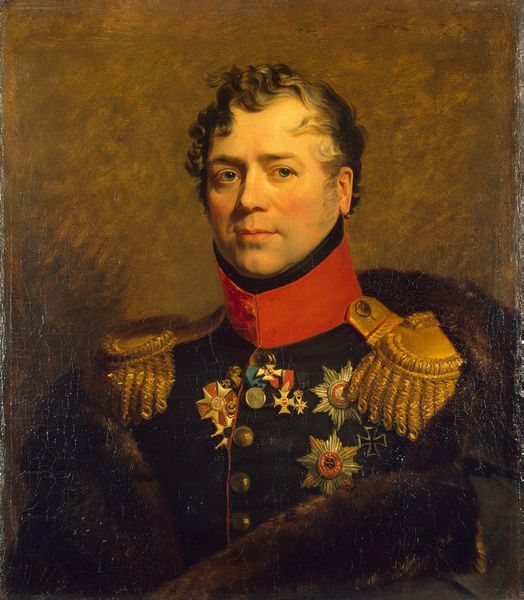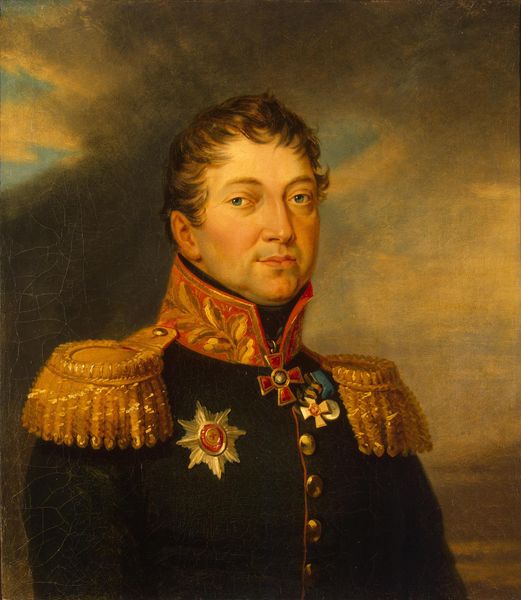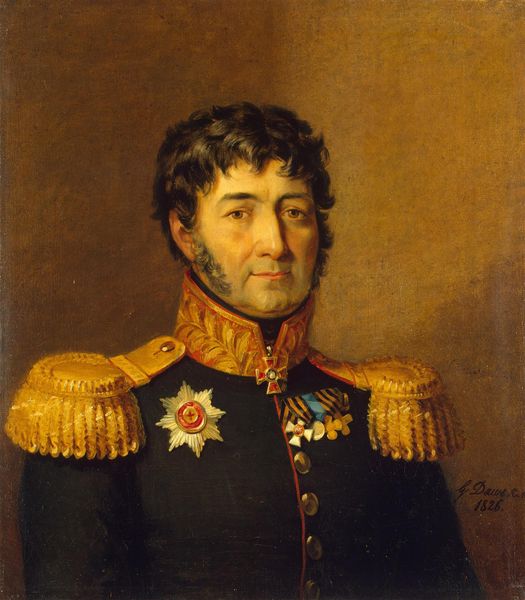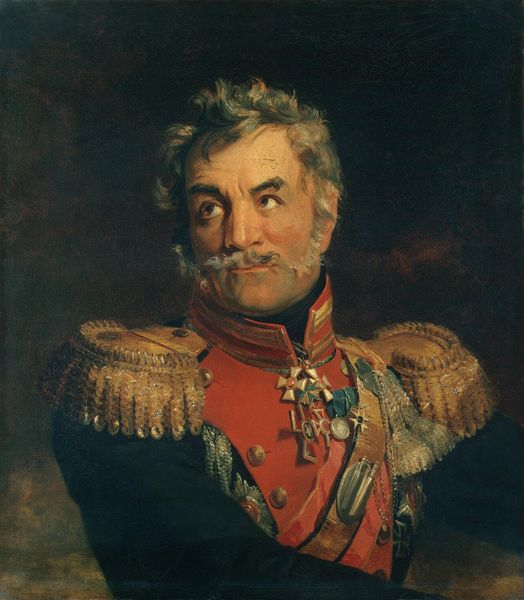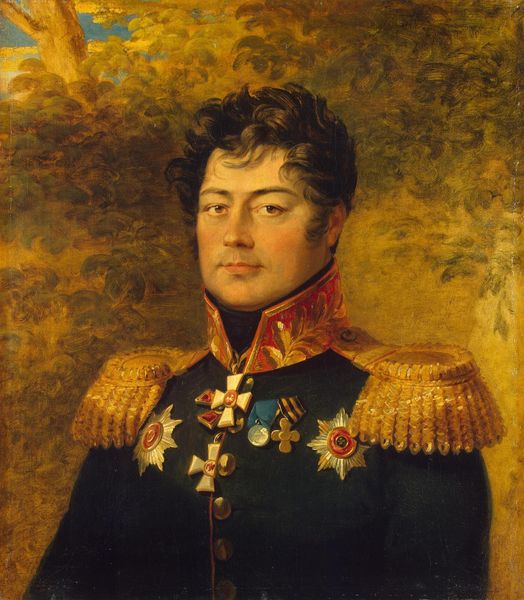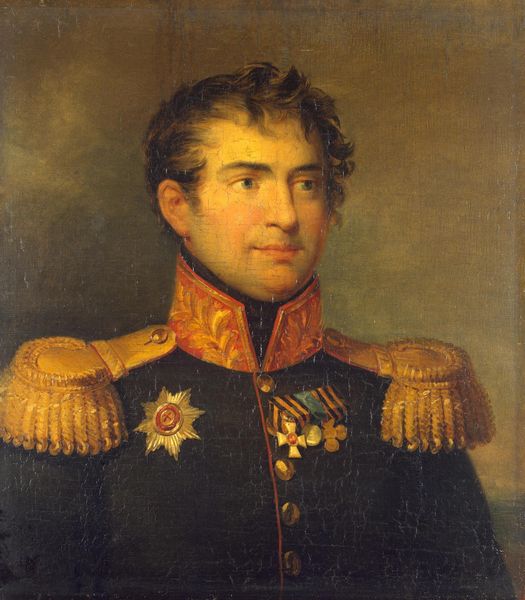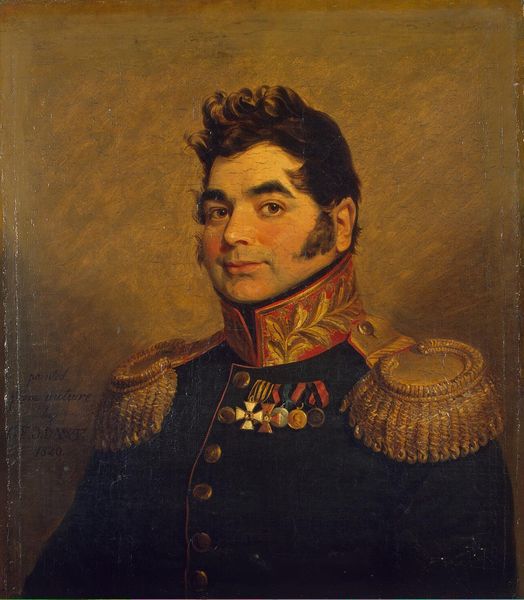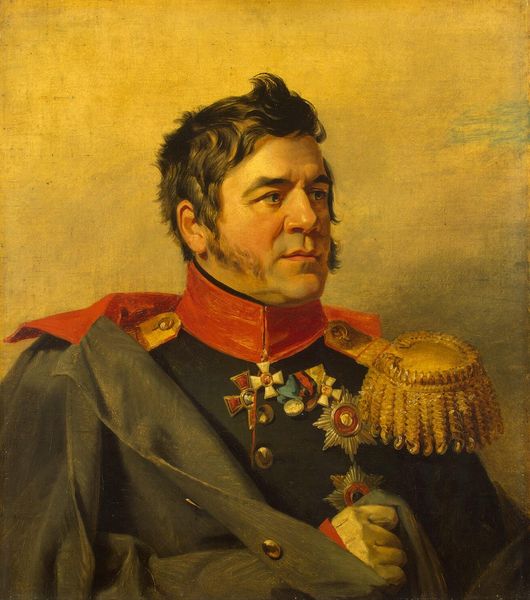
painting, oil-paint
#
portrait
#
portrait
#
painting
#
oil-paint
#
romanticism
#
history-painting
#
academic-art
Copyright: Public domain
Curator: This is George Dawe's 1822 oil-on-canvas piece, "Portrait of Alexander D. Balashov," currently housed at the Hermitage Museum. Editor: It strikes me immediately how imposing he appears, despite the soft lighting. The heavy gold epaulettes, the decorations...it's a visual declaration of power. Curator: Absolutely. In the language of portraits, those medals serve as visual mnemonics. Each a symbol linking Balashov to specific battles, campaigns, and acts of service under the Tsar, a chain of cultural memory. Editor: Yes, and look at how Dawe has meticulously rendered the textures - the dull gleam of the metal, the plush nap of the velvet collar. It is very carefully calibrated to broadcast wealth, prestige and status in a precise symbolic code. Curator: Dawe clearly leverages visual cues of rank and service to embed a specific cultural message, reinforcing the sitter’s place within the complex social fabric of Tsarist Russia. Do you see how his slightly downturned gaze and relaxed hands suggest confident authority? Editor: Though his face is softened in an almost Romantic way; not idealized exactly, but with smoothed lines, and subtle shadow playing across his features, it hints to an almost sympathetic tone. I find this contrasts so strongly with the stiff military regalia he bears. It is an attempt at individualisation. Curator: He’s a hero made human, indeed, yet notice that even those softened features become signifiers themselves? Perhaps pointing to some internal burden, of balancing service with personal sacrifice? That gaze carries echoes beyond just simple command. Editor: Precisely. It brings another element, the beginning of a story we're drawn to complete. It's this interplay between sharp detail and subdued expression that makes it compelling. Dawe uses his considerable skill to project the weight of responsibility along with all the visible trappings of command. Curator: I find it truly remarkable how this artwork encapsulates the emotional and cultural currents of its era. Editor: Yes, it really comes alive under a symbolic lens; a study not just in formal mastery, but how the very structure amplifies the artwork’s purpose and emotional range.
Comments
No comments
Be the first to comment and join the conversation on the ultimate creative platform.
